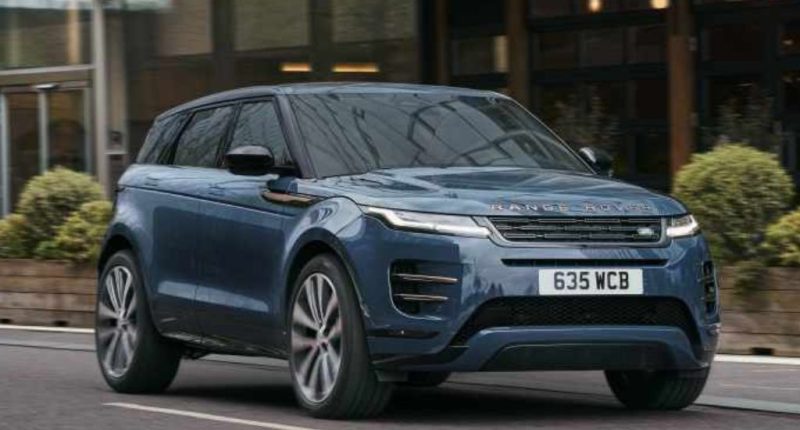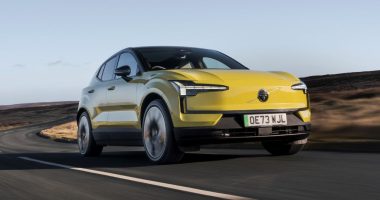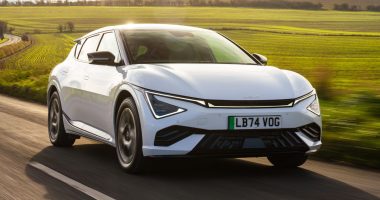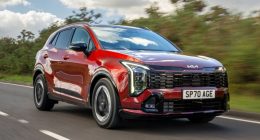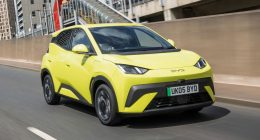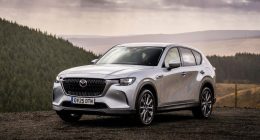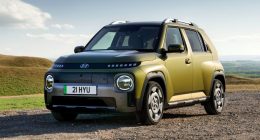It is hard to believe but the second-generation Range Rover Evoque has been on sale now since 2018. Time has been more than kind to the premium compact Sports Utility Vehicle, helped in no small part by a simplistic, ‘reductive’ design approach, and a silhouette that is a subtle evolution of the original.
Though sales remain strong, it has not stopped Land Rover from running the rule over the Evoque to keep it looking – and feeling – fresh. On the outside, the updates for a car that now commands £5,000 more than the pre-facelift version, are subtle at best.
Land Rover’s current obsession with paring back has given way to slimmer head- and tail-lights to bring it in line with the rest of the range. At the front, improved pixel LEDs, along with the brand’s latest matrix dimming technology, come on ‘HSE’ and top-of-the range ‘Autobiography’ models, with these running fancy 20-inch, multi-spoke diamond cut alloys.
We are sampling the ‘Autobiography’ which, once options have been factored in, commands a list price of £63,565. Diesel-favouring customers are catered for by way of a 2.0-litre, four-cylinder turbo motor badged D200. Developing 201bhp, it is ideally suited for those who will cover long-distances annually. Option number two is a petrol-electric PHEV that can accept a three-pin plug, 7kW, or 32kW direct current power sources for charging times that vary from five hours and 45 minutes to a more respectable 20 minutes.
The tweaked plug-in hybrid set-up comprises a 197bhp, 1.5-litre three-cylinder Ingenium turbo petrol engine, and a rear axle-mounted 107bhp synchronous electric motor that drives the back wheels only. Our P300e was finished in ‘Tribeca Blue’ (£750) and had a ‘Corinthian Bronze’ roof (£650) – a colour repeated on the front bumper veins, front wings and rear bumper-incorporated faux exhaust outlets.
Engineers have reworked the PHEV set-up on the Evoque, paying particular attention to the onboard 15kWh battery that now delivers one additional mile of zero-emission motoring to take the total to thirty-nine miles – a figure bettered by the Mercedes GLA250 e and BMW’s X1 xDrive30e. It is worth leaning on the car’s plug-in capabilities wherever possible because relying on petrol alone is going to prove costly in the long run as fuel returns in the low- to early thirties is the best owners can expect.
Other drawbacks that come with having to accommodate this technology include a fuel tank that has to shrink in size, and although the boot remains unchanged at a modest 472-litres, the extra hardware ensures only non-plug-in hybrid versions offer some handy underfloor storage and a spare tyre option.
Having the battery topped up also brings performance benefits; when in hybrid mode, this two tonne SUV is moved along by 304bhp and 372lb ft torque and it is as quick as the quoted 0-62mph time (6.4 seconds) suggest. When the battery is depleted the three-pot engine becomes stressed, with this most noticeable under acceleration or kickdown. The flip side is a new eight-speed automatic transmission that goes about its business with the minimum of fuss to deliver hot knife through butter gear shifts.
The adaptive chassis makes for a truly sweet drive so from behind the wheel you soon forget just how big and heavy the Evoque is given the way it handles and responds, not to mention the body being elevated by some 212 millimetres off the ground. Torque vectoring also has a subtle hand in providing sharp dynamics, braking each corner and modulating the power that is relayed to these. The good news continues on the ride front; even on monstrous 20-inch rims, it is silky smooth, dealing with the rough and tumble of motorways, A-roads and country lanes in a reassuring manner.
This is experienced from inside a cabin that has been significantly refreshed and that no longer majors on a dual screen layout but rather relies on a single, i-Pad-esque 11.4-inch touchscreen. Building-in Land Rover’s ‘Pivi Pro’ software, it is slick and straightforward to use, although some physical shortcut buttons or switches would be welcome.
Blessed with sharp resolution and super-fast processing times, luckily you don’t have to wade through one menu after another to pick out the most common functions, although we did notice that on particularly long drives the interface temperature becomes alarmingly warm. Another big plus with the removal of the lower screen that previously existed is the creation of some useful storage space and the introduction of a wireless charge pad for compatible smartphone devices.
The centre console section on our car was finished in a very classy Shadow Grey Ash veneer and repeated on the door cards, while the front seats were electrically operated, heated and cooled. The fundamental architecture has hardly changed, so for adults to travel around in comfort, the Evoque is best categorised as a 2+2. Optional on ‘Autobiography’ and a £1,600 option on ‘S’ and ‘SE’, the full-length panoramic sunroof works wonders, bathing rows one and two in light for a spacious, airy feel.
As for standard equipment, Land Rover’s clever ‘ClearSight’ rear view mirror, a head-up display, cabin air purification, two-zone climate control, mood lighting and 3D surround camera are included. Music lovers are sure to appreciate the Meridian-developed stereo system, too, and for an extra £630 this can be up-graded to a fourteen-speaker set-up with dual channel subwoofer and 650 watt amplifier.
